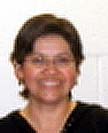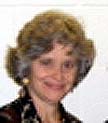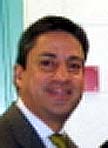Support/Study Groups for SLPs
About the presenters: We are a group of bilingual Speech and Language Pathologists who are employed by the Boston Public Schools. Our clients are children with a variety of communication disorders. However, we share a special interest in working with children who stutter. Therefore, we formed a Stuttering Study Group that meets once a month to discuss the latest research and literature on fluency disorders. We challenge each other to apply new approaches in therapy with our clients and discuss the outcomes in subsequent meetings.
 |
Lourdes Ramos-Heinrichs has been interested in the field of stuttering disorders for over 15 years. In 2001 she joined the Initial Cadre of Fluency specialist/mentor. Along with her colleagues in the Boston Public Schools, she helped establish a very productive stuttering study group which meets once or twice a month to discuss research, diagnostics and new stuttering therapy approaches. |
 |
Sandra Garzón has worked with bilingual Spanish-English children for 15 years. Four years ago, she began to explore the area of stuttering in more depth. She has attended several Stuttering Foundation Workshops and is active in a local Stuttering Study Group. |
 |
Maureen Larkin joined the Stuttering Study Group in September 2004 where they discuss particular students with the other clinicians and practice counseling skills on each other every month. This year, the focus of the Stuttering Study Group has been on ways a cognitive-behavioral approach can facilitate speech fluency in children who stutter. |
 |
Virginia Nicholson's interest in stuttering began 25 years ago, while teaching ESL and studying classical voice, exploring the relationship of music to language and how the areas of the brain operate to produce these two forms of communication. She is most interested in working with children and adults with disorders of speech, fluency, and vocal hyper-function and the psychological features that contribute to each disorder. . |
 |
Jose Sanchez states, "Through our Stuttering Group I have learned a great deal about stuttering. I have had the opportunity to stay informed of the latest research and literature about this communication disorder." |
 |
Helen Selle works for the Boston Public Schools and has been interested in stuttering ever since graduate school and has provided therapy to many students who stutter. In 2005 she attended the Northeast Conference sponsored by the Stuttering Foundation of America in 2005 and the International Fluency Congress in Dublin, Ireland, in 2006. |
Stuttering Study Group
by Lourdes Ramos-Heinrichs, Sandra Garz'n, Maureen Larkin, Virginia Nicholson, Jose Sanchez, and Helen Selle
from Massachusetts, USA
Our Stuttering Study Group (SSG) meets an average of nine sessions per year. Prior to our first conference in September, we remind each other to bring a topic of interest to our first meeting. During that session we brainstorm about the suggested topics for the year. After a choice is democratically made, the group members break the chosen material into sub-topics to distribute throughout the monthly schedule for more in-depth discussions.
As we are aware of the ASHA CEU requirement for re-certification, our final topic selection tends to employ materials that offer CEU opportunities. So far we have identified two sources that offer high quality and affordable CEU opportunities for individuals or groups who may wish to engage in self-study of stuttering disorders. The first source is the Stuttering Foundation of America. It offers numerous programs with videos, handouts, testing materials and books to cover at least three years of monthly group discussions. For more information on how to obtain your CEU materials, you may contact the Stuttering Foundation at their web site: www.stutteringhelp.org.
We have found that the Stuttering Foundation offers ample workshops that are CEU worthy and reasonably priced. For example, last year we chose the Stuttering Foundation workshop on Counseling Children Who Stutter workshop. The program included a study-guide, DVD, and CEU test forms. The sub-topics explored various cognitive and emotional issues that affect people who stutter. We discussed strategies for counseling people who stutter as well as their parents. We also looked at techniques for understanding and coping with negative emotions and counseling school-age children in group therapy.
The previous year we discussed and applied Practical Ideas for the School Clinician (a set of 6 DVDs.) Our discussions focused on diagnosing and treating school age children who stutter. We also addressed various ways to be more effective school clinicians, such as how to sequence therapy activities according to the client's needs. Other topics we explored in this series included effectively managing feelings of guilt and shame. Finally, we focused on stuttering intervention for teens.
Another good source for topics of discussion that carry ASHA CEUs is through the Self-Study Programs available in the Journal of Fluency Disorders (JFD) which is the Official Journal of the International Fluency Association. JFD offers cutting edge research in stuttering disorders, covering detailed study of experimental, theoretical and clinical components of stuttering, including the latest remediation methodology. Because the journal's articles of study can be a bit challenging to comprehend for beginning clinicians, the level of difficulty would be appropriate for more experienced groups. Through this journal it is possible to obtain up to 6 CEUs per year at amazingly economical prices. For information on how to join the Journal of Fluency Disorders contact Dr. Howard D. Schwartz at "http://www.theifa.org/membership.html/.
Our SSG has agreed to engage in studying the Fluency Journal during our upcoming academic year, 2007-2008. As a group we feel ready to venture into a new level of difficulty. For example, the latest Journal of Fluency Disorders (Volume 32, issue 2, 2007) includes topics in verb use in children, stages of change in stuttering and enhancing treatment for school-age children who stutter.
Finally, textbooks and assessment protocols can present appropriate choices for additional study materials. For example, we have learned a great deal about stuttering disorders through careful analysis of test protocols (i.e., Stuttering Severity Instrument, SSI-3), communication attitude checklists (i.e., CAT-R.), and textbooks (i.e., the Lidcombe Program of Early Stuttering Intervention: A Clinician's Guide.) Our Stuttering Study Group will investigate future CEU opportunities through ASHA for these types of study materials that do not include CEU forums.
Outreach
We have given workshops on stuttering assessment and intervention strategies to fellow speech and language pathologists in the Boston Public Schools. The attendees have consistently responded positively toward the workshops, posing insightful questions and expressing gratitude for our efforts. In addition, we provide support to other school-based therapists who need consultation and feedback concerning their clients with fluency disorders. In our efforts to reach out to families of children who stutter, we have organized two school-based events with the objective to educate and involve parents in the therapy processes of their children.
Some of our Stuttering Study Group members have received study scholarships that have enabled them to network with stuttering organizations overseas. For example, one member visited a stuttering support group in Spain; another attended a conference in England; and two others interviewed randomly selected individuals from the general public across Ireland about their attitudes on people who stuttering.
How to Start your Own Stuttering Group
We are also members of a bilingual speech pathologist inquiry group within the Boston Public Schools. We meet once a month to discuss bilingual and bicultural issues. The group provides us with a common ground to explore a range of professional interests. Several of our members of the bilingual group discovered that we had a special interest in stuttering disorders and that in order to better serve this student population we needed to establish a stuttering study group. Before forming your own stuttering group, you can begin by discussing your area of interest with other speech pathologists with similar predilection. Once you have identified a few potential members, you may want to set up an initial meeting to begin discussing group logistics such as location, dates, and times to meet. We have found it convenient to reach our group members via e-mail. By posting an invitation on a web site that your colleagues visit, you are likely to find speech pathologists that may want to be part of a stuttering study group. Finally, you may want announce your wish in forming a stuttering group at the beginning of the school year during your orientation meeting, which you probably have if you work in a school district. It is our objective to continue investing time and effort to maintain alive our enthusiasm about our Stuttering Study Group. We find it professionally and socially fulfilling to be part of this very supportive group. Our long-term goal is to maintain and expand our contacts with similar stuttering groups around the world.
August 30, 2006

